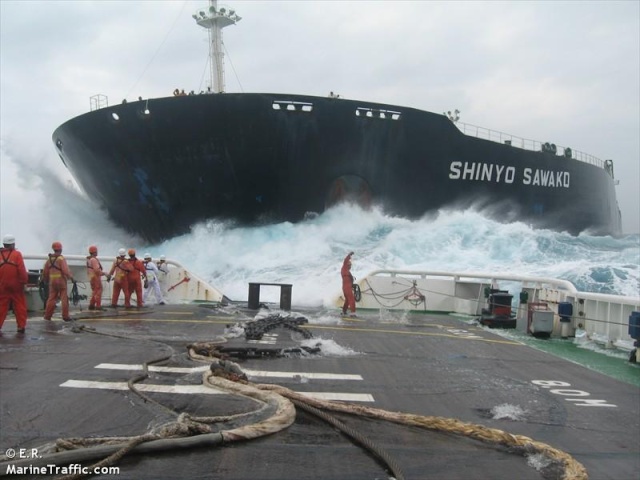[QUOTE=Deviated;133041]Great input from C.captain and Ocean31. Thank you…
I wrote this as objective as possible to get some different input. The boat does have all types of tow gear, but theres some disagreement on how to set the gear. I’m going to wait to see if anyone has more input before I say what the three different tow set ups are being discussed.
As for the time frame… Of course there is no set time. It takes as long as it takes to get it safely connected. I said 20 mins to emphasize that many times due to weather offshore, the tug doesn’t always have the luxury of holding position for long periods of time to make the connection. Gear set up inshore at a dock can’t always be set up offshore as easily i.e. two hours holding position for a ship to make the connection could get dangerous. The connection gear should be able to be handled by the crew on the ship and not chafe through for long tows. This leads to my first question, What tow/surge gear i.e chain, synthetic, wire combination would you to send up to the ship?
C.Captain your input about the tow pins is very interesting… In short one Captain feels its okay to tow out of the pins for long periods of time over the bulwarks in order to keep control. The other Captain feels the wire needs to stay in the pins for the duration of the tow and only taken out for maneuvering when shortening up.
Thanks again for the discussion,
Deviated[/QUOTE]
I would prefer to have the ship stop off one anchor and the use the ships anchor chain as the surge gear. This would solve the biggest problem - chaffing. Also, veering more chain should stop , or at least reduce, the ship from yawing.
Of course everyone would prefer to keep the wire in the tow pins. And the tow could probably be controlled with the wire in the pins. If not, then it would become necessary to move the towing point forward of the rudders. The traditional way of doing that was with a. Gob Rope, a simple lashing between a shackle attached to the deck and a shackle riding on the tow wire. Today, it would be more likely to run a wire from another drum on the winch through a snatch block shackled to the deck and ending in another snatch block riding on the tow wire. This can be adjusted by hogging the tow wire down close to the deck and moving the towing point forward of the rudders. It can also be let out to let the wire run over a quarter while making a turn.
However the better approach would be to stop the ship from yawing from side to side. First I would try adjusting the trim of the ship. It should tow better trimmed by the stern. If towing from a single point, the ship might settle down off to one side, probably to leeward, by cranking the rudder over about 5 degrees to leeward. Alternatively, if towing on bridle with a leg to each side of the bow the ship might settle down off to one side by shortening, or lengthening, one leg of the bridle. Another alternative might be to trail something astern of the ship, such as a string of Yokohamas.
For a long tow it would be well worth investing the time into finding a way to stop the ship from yawing back and forth across the stern of the tug. Why tow the ship for 2000 miles zig zagging back and forth over a 1000 mile base course, if you don’t have to
